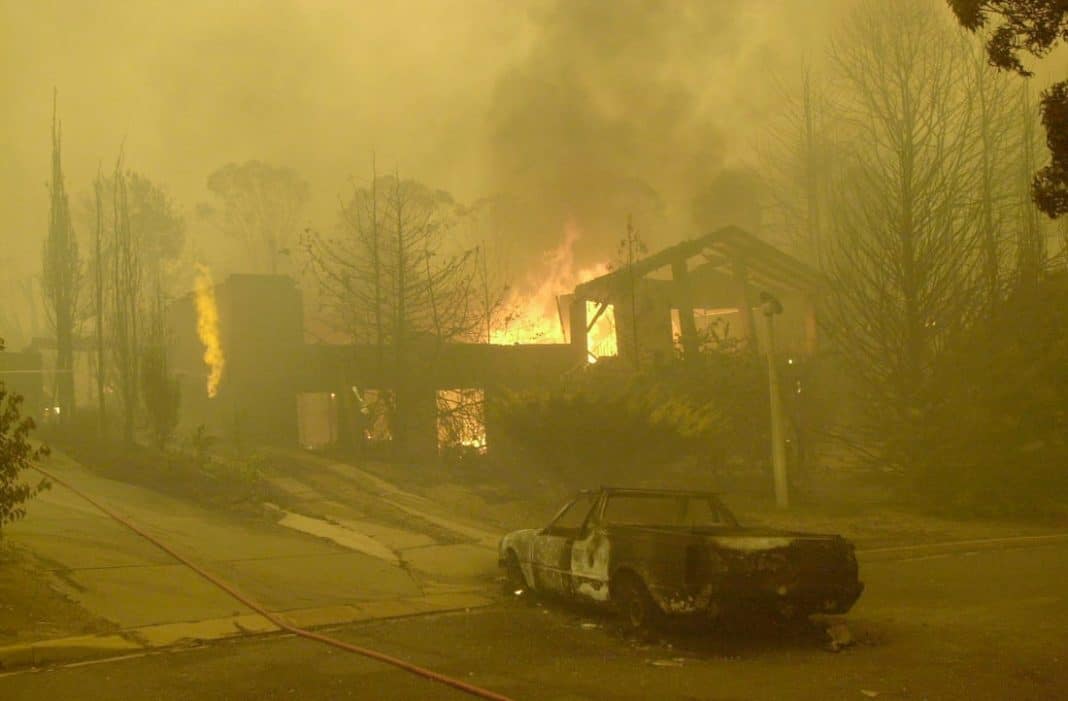Described by the firefighters fighting it as ‘Armageddon’, the devastating fires of 18 January 2003 will forever be etched into the minds of Canberrans.
We knew the fires were threatening, but we had never known fires like this. What initially started as four separate fires, a fusion of factors created something that we as a city had not faced before. Its ferociousness caught everyone by surprise, cyclone-strength winds and fire tornados: it was a firestorm. I remember that day well, coming over the crest of Hindmarsh Drive towards the Woden Valley to a sky that was black and orange on my way to assist my parents in Farrer.
By 19 January we knew the cost: 500 homes destroyed, hundreds were injured, and our local ecology was decimated. Worst of all, the families of Dorothy McGrath, Alison Tener, Peter Brooke, and Doug Fraser would be left without loved ones.
At the height of this crisis, our city’s brave first responders rose to the challenge. ACT Police were assisting with evacuations, fire crews from the ACT and NSW were in Morant Circuit in Kambah working to save houses, and ACT paramedics were on the streets conducting welfare checks of those who had stayed to defend their property.
My electorate of Bean covers areas that were affected, particularly in Duffy, Holder, Chapman, Kambah and Uriarra, and it does not take long for me to run into a resident who was affected by the 2003 bushfires.
Most recently, the 2020 Orroral Valley fire had many residents in the south concerned that the events of January 2003 were on the brink of being repeated. Emergency services were well prepared and, thankfully, weather conditions kept the fires from our suburbs. That fire would take a month to be extinguished and leave 82,000 hectares of Namadgi National Park scorched.
However, the legacy of the 2003 fires lives on positively in our community, landscape, and our emergency preparedness. From the ashes in the Molonglo Valley, the National Arboretum arose. Newer suburbs in Bean, like Denman Prospect, Coombs and Wright, have benefitted from planning and other measures designed to ensure we are ready for the next bushfire event. And the Stromlo Forest Park is a community treasure, a special place of recreation and research.
With the effects of climate change, we are seeing one-in-100-year events occur more often and now must posture emergency preparedness for future bushfire events as a case of when, not if. Indisputably, climate change is now creating bushfire seasons that start earlier, last longer and are more intense than previous seasons. The worst thing that we as a city could have done after this disaster was not study and learn from it. The subsequent inquiry and report into the 2003 Bushfires were extensive and because of this, the ACT Government, with assistance from Federal Governments, now stands well prepared with state-of-the-art surveillance, mapping, and prediction technology in its arsenal to ensure the best response is delivered for future fires.
On Wednesday 18 January 2023, the Canberra community will observe the 20th anniversary through a special evening ceremony at the ACT Bushfire Memorial. I would encourage Canberrans to take some time to visit the Memorial in Stromlo Forest Park, to remember lives lost and the many still affected, and immerse themselves in this place of peace and reflection.
– David Smith MP, Member for Bean



